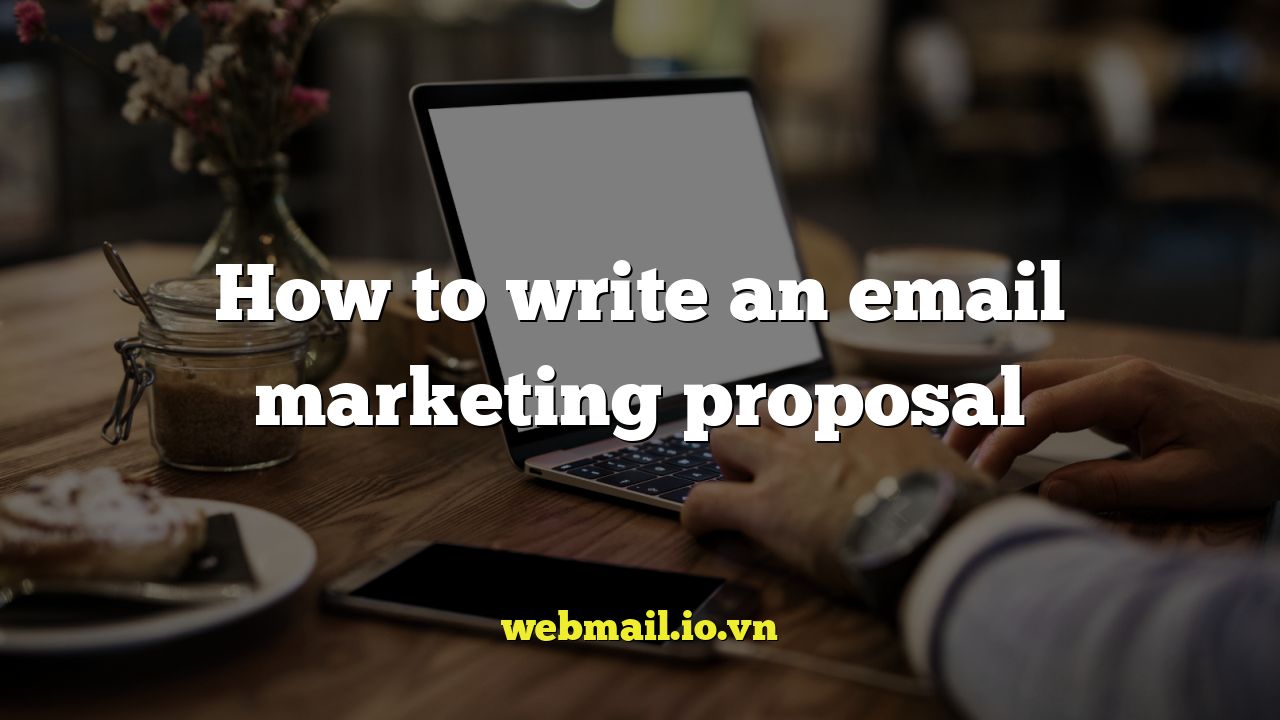
Understanding the Email Marketing Proposal
An email marketing proposal is a document that outlines a plan for how you will help a client achieve their marketing goals through email. It’s more than just a price quote; it’s a strategic roadmap that demonstrates your understanding of their business, their target audience, and the challenges they face. A compelling proposal showcases your expertise, builds trust, and ultimately wins you the business.
A successful email marketing proposal should not only detail your services but also resonate with the client’s specific needs and demonstrate a clear return on investment (ROI). Think of it as a sales tool that needs to convince the client that you are the best partner for their email marketing efforts.
Key Components of an Email Marketing Proposal
A well-structured email marketing proposal typically includes the following key sections:
- Executive Summary
- Client Background and Needs Analysis
- Proposed Strategy
- Services and Deliverables
- Timeline and Milestones
- Pricing and Payment Terms
- Case Studies and Testimonials
- About Us
- Call to Action
Crafting a Compelling Executive Summary
The executive summary is arguably the most crucial part of your proposal. It’s a brief overview that highlights the key benefits of your proposed solution and grabs the client’s attention from the outset. Think of it as an elevator pitch that summarizes the entire proposal in a few concise paragraphs.
In the executive summary, you should:
- Clearly state the client’s problem and your proposed solution.
- Highlight the key benefits of your solution, focusing on ROI.
- Summarize your unique selling proposition (USP).
- End with a compelling call to action.
Keep it concise and impactful. The goal is to entice the client to read the rest of the proposal.
Analyzing the Client’s Background and Needs
Demonstrate your understanding of the client’s business, industry, target audience, and marketing goals. This section shows that you’ve done your research and are tailoring your proposal to their specific needs.
Include information about:
- Their current marketing efforts and performance.
- Their target audience and customer personas.
- Their key competitors.
- Their overall business objectives.
Identify their pain points and challenges. What are they struggling with? How can email marketing help them overcome these challenges?
Developing a Strategic Email Marketing Plan
This is the heart of your proposal. Outline your proposed email marketing strategy, detailing how you will achieve the client’s goals. Be specific and provide concrete examples.
Address the following aspects:
- Target audience segmentation and personalization strategies.
- Email campaign types (e.g., newsletters, promotional emails, automated sequences).
- Content strategy and email design guidelines.
- List building strategies (e.g., opt-in forms, lead magnets).
- A/B testing and optimization plan.
- Reporting and analytics.
Explain your reasoning behind each recommendation and how it aligns with the client’s objectives. Show them that you have a clear plan and a deep understanding of email marketing best practices.
Defining Services and Deliverables
Clearly outline the specific services you will provide and the deliverables the client can expect. This section should be highly detailed and leave no room for ambiguity.
Examples of services and deliverables include:
- Email template design and development.
- Content creation (email copy, subject lines, calls to action).
- List management and segmentation.
- Campaign setup and deployment.
- A/B testing and optimization.
- Reporting and analytics.
Specify the number of emails you will send per month, the frequency of reporting, and any other relevant details. This will help the client understand the scope of your services and what they will be paying for.
Establishing a Realistic Timeline and Milestones
Provide a realistic timeline for implementing the email marketing strategy. Break down the project into smaller milestones with specific deadlines. This demonstrates your organizational skills and helps the client track progress.
Include key milestones such as:
- Initial consultation and strategy development.
- Email template design and approval.
- List segmentation and database cleanup.
- Campaign setup and testing.
- Campaign launch.
- Ongoing optimization and reporting.
Ensure the timeline is feasible and takes into account potential delays. Be upfront about any dependencies that may affect the schedule.
Presenting Pricing and Payment Terms
Clearly state your pricing structure and payment terms. Be transparent and avoid hidden fees. Offer different pricing options if possible to cater to various budgets.
Consider offering:
- Fixed pricing for specific projects or services.
- Hourly rates for ongoing consulting or support.
- Performance-based pricing (e.g., commission on sales).
Outline your payment schedule and accepted payment methods. Include information about late payment fees and any other relevant financial terms.
Showcasing Case Studies and Testimonials
Build credibility by including case studies and testimonials that demonstrate your success in helping other clients achieve their email marketing goals. Highlight quantifiable results, such as increased open rates, click-through rates, and conversions.
Focus on case studies that are relevant to the client’s industry or specific needs. Show them that you have a proven track record of delivering results.
Introducing Your Company and Team
Provide a brief overview of your company and team. Highlight your experience, expertise, and unique selling proposition. Emphasize your commitment to client satisfaction and your passion for email marketing.
Include information about:
- Your company’s history and mission.
- Your team’s expertise and certifications.
- Your commitment to ethical email marketing practices.
Concluding with a Strong Call to Action
End your proposal with a clear and compelling call to action. Tell the client exactly what you want them to do next. Make it easy for them to accept your proposal and move forward.
Examples of calls to action include:
- Schedule a call to discuss the proposal further.
- Sign the attached agreement to proceed.
- Contact us with any questions or concerns.
Thank the client for their time and consideration. Reiterate your enthusiasm for working with them and helping them achieve their email marketing goals.